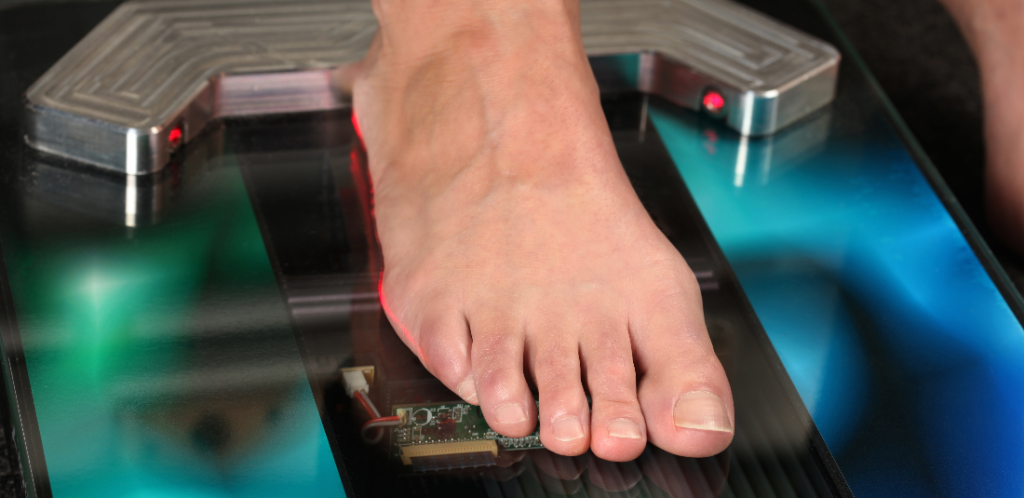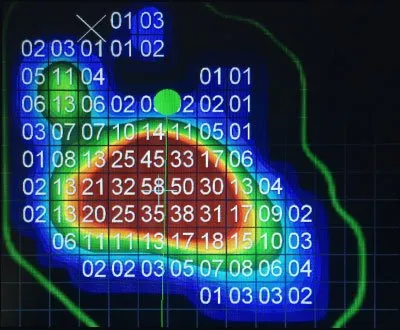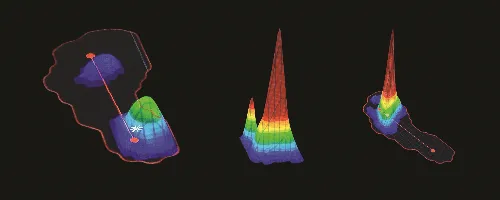Case Study: When Your Corn Feels Like A Bowling Bowl


Meet Anthony
- 50 years old
- Full-time security guard
- Has type two diabetes
We first met Anthony when he came in to have the painful corns on the bottom of his feet treated. Anthony had been trying for many months to treat these corns himself using corn pads and creams from the pharmacy, but this didn’t provide him with any relief. While Anthony’s diabetes is controlled, he is well aware that he is vulnerable to additional risks and complications associated with the corns because of the diabetes.

Our Assessment
- Neurological assessments were performed on Anthony’s feet to determine if his sensation has been affected by his diabetes. They revealed that Anthony’s ‘protective sensation’ was not diminished.
Your protective sensation means your ability to feel and distinguish light sensations on the feet, so that if they’re dangerous – like a splinter that penetrates your foot – you’re able to feel it and take the appropriate action to maintain your foot health. We use a 10g monofilament to test for this.
Next, vascular assessments were performed to determine the quality of the blood supply to Anthony’s feet, as this can be compromised by diabetes. Again, Anthony’s circulation was within the normal range.
A dermatological assessment revealed multiple corns under the balls of his feet. Corns result from excess pressure or friction to an area of skin. We analysed Anthony’s gait using the Zebris gait analysis system, which filmed his gait from two angles as well as using 7,000 pressure sensors to detect spikes in pressure beneath the feet. This revealed significant pressure beneath the 2nd and 3rd toe joints at the ball of his foot on both feet. To be precise, there was an enormous 60 newtons per square centimetre at one site – which is almost the equivalent of one bowling ball worth of force on an area the size of one side of a dice
Treatment
Anthony’s treatment began with debriding and enucleating (removing the bulk of) his corns, which provided immediate pain relief when he walked.
To prevent these corns from quickly returning as Anthony continued to walk with high pressure points, we needed to redistribute the forces beneath his feet more evenly. We used custom foot orthotics to achieve this, and the pressure was redistributed across the entire sole of the foot. We included additional off-loading padding and cushioning in the orthotics to help Anthony feel as comfortable as possible on his feet. Because of Anthony’s foot biomechanics and active lifestyle, we knew that it was unlikely that we could prevent the corns from returning completely, but we could definitely slow down the return and reduce his pain and discomfort.
We also prescribed a series of ankle and hip mobility exercises, including stretches, to improve Anthony’s flexibility and function of his lower limbs, thus reduce forefoot pressure.


At The Podiatrist, we don’t just look to address the symptoms, we consider it paramount to discover and address the underlying cause. Removing the corns is not enough. We must look at reducing the causative forces then led to these corns, otherwise, they will just return in 4-6 weeks – and so would Anthony and his pain.
When areas of high pressure are paired with diminished sensation and inadequate circulation, there is a significant risk of being unable to feel any damage incurred to the feet and skin, and then being unable to efficiently heal the area because of a poor blood supply. This was exactly Anthony’s primary concern.
Diagnosis
NOT JUST CORNS
Aside from having the corns on his feet, Anthony’s gait analysis also showed that he had tight calf muscles, restricted hip extension, and a pivot whilst propelling off of his forefoot. Each of these factors was contributing to the high pressures beneath his feet and by extension the painful corns.
Success!
At Anthony’s six week review, he reported a very slow progression in the return of his corns. Initially, Anthony would have required corn care every six weeks by our Podiatrists, but due to the success of the treatment, we have now been able to push this out to every four months. As a bonus, Anthony also no longer pivots on his forefoot during propulsion as his hip and ankle range of motion have improved from the exercises.


